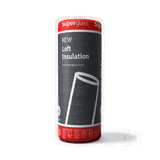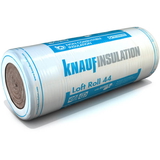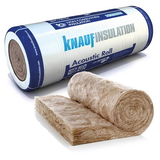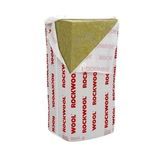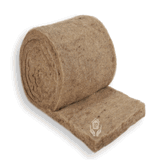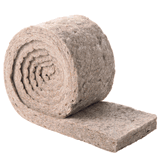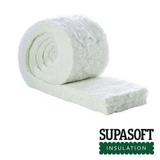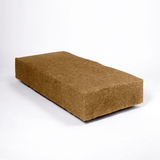- Blogs
- Tips For Installing Loft Insulation
Tips For Installing Loft Insulation

If you’re looking to make your loft more comfortable, there are a few things you can do. Loft insulation can help keep the loft space cold or warm. The type of loft insulation you choose should be based on the way you want to use your loft and also the structure of your home, but if you’re unsure, consult a professional.
Before moving on to our main topic, which is installing loft insulation, let us first look into the different ways through which heat loss through roofs happens.
Conduction
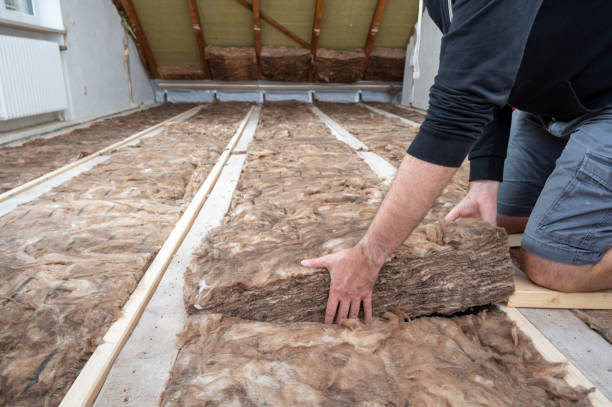 There are a number of factors that can contribute to heat loss through the roof of a house. However, heat loss through roofs mainly occurs through the process of conduction. While most insulating materials are poor conductors of heat, some types of insulation can help reduce this problem.
There are a number of factors that can contribute to heat loss through the roof of a house. However, heat loss through roofs mainly occurs through the process of conduction. While most insulating materials are poor conductors of heat, some types of insulation can help reduce this problem.
Conduction is a process through which heat is transferred from one object to another or one molecule to another. It can take place in solid, liquid, or gaseous forms. The material itself determines its capacity to conduct or restrict heat transfer. In other words, a lower thermal conductivity means that the insulating material will transmit heat more slowly, which makes it a great option for insulation.
For instance, open cell insulation like spray foam or cavity wall batts have small air pockets which can reduce heat transfer. The air trapped within these pockets does not circulate, thus stopping the conduction process.
Loft insulation rolls made of fibreglass are also examples of open cell insulation. They effectively reduce heat loss through the roof, as they trap warm air inside the property and prevent cold air from entering.
While many of us don’t pay much attention to this aspect of insulation, it is important to know that it can affect your energy bills. One of the most common types of insulation is batt insulation, which again is an open cell, fibrous material that can be made from both natural and manmade materials.
Batt insulation is the cheapest and most popular type of insulation available and is often installed without breather membranes or vapour control layers. Consequently, it increases the risk of condensation within the insulation material and can result in mould growth.
In addition to loft insulation, another aspect that affects the house's energy efficiency is its thermal resistance. Gases, such as air and water, have poor thermal conduction properties. However, trapped gases can serve as insulating materials because they can trap heat. Because trapped gases are relatively insulating, they can be disrupted into small cells, which can’t transfer heat by natural convection.
Traditional and Modern loft insulation Materials
Convection loft insulation can help reduce heating costs in your home by up to 60%, which is more than worth its weight in gold. It also helps reduce CO2 emissions, which is good news for the environment. You can get insulation that is up to 290mm thick for this purpose.
Modern insulation is made from a number of different materials, including manmade and natural wool. These materials can help keep your home warm in winter and cool in summer and have varying levels of R-values.
While the benefits of loft insulation are well-known, the science behind it is fascinating. It turns out that up to 25% of heat is lost through a house’s roof. Loft insulation, or attic insulation, helps reduce this loss of heat, thus reducing fuel bills and keeping the interior of your home warm all year round. But how does it work? Well, the answer lies in the physics of thermodynamics. Thicker loft insulation prevents more heat from escaping because it traps more air between its layers.
As with all types of loft insulation, the more expensive the product is, the better it performs. It works as a solid barrier between hot and cold objects, preventing heat transfer. Moreover, it prevents trapped air from circulating, making your home feel warmer. Therefore, the better quality loft insulation you buy, the more energy efficient your home will be. It is worth noting that thick loft insulation can also help to lower your energy bills.
At Buy insulation online, we stock loft insulation rolls from Rockwool, Knauf and Superglass.
Multifoil Insulation
In order to ensure your loft is insulated efficiently, you should look for a reputable multi-foil supplier. These manufacturers sell loft insulation kits which can be installed yourself in less than an hour. They require a minimum thickness of 270mm. 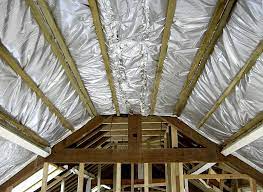
Once installed, Multifoil insulation will prevent up to 12-15 litres of water vapour from entering your loft. Once erected, Multifoil will help trap this moisture and keep it where it belongs.
In addition to being an environmentally-friendly solution, multi-foil loft insulation can help you save money on your energy bills. Multifoil’s thin, lightweight design makes it easy to handle.
During installation, there is very little dust. Multifoil also doesn’t affect the appearance of the roof, and its durability has earned it the backing of the LABC and NASA. Multifoil loft insulation has been in use for years, and it has helped homeowners achieve a U-value of 0.18 W/m2.K.
In addition to being a space-saving option, multi-foil loft insulation also has some excellent heat-reflecting qualities, making it the ideal solution for loft insulation. Because it provides a thin foil surface, Multifoil insulation keeps your home warm and comfortable year-round. Many foil insulation suppliers sell this insulation, including SuperFOIL, and Actis It is often used in conjunction with PIR board to ensure maximum efficiency. At Buy Insulation Online, we store multifoil insulation from Actis and Superfoil.
PIR Insulation
When comparing the different types of loft insulation, PIR is often a better choice. PIR board is a lightweight solution that can accommodate typical storage loads without imposing significant weight on structural timbers. PIR is perfect for warm roof insulation.
Here are the advantages of PIR loft insulation. Weighing only a few grams per square metre, PIR is an economical option for loft insulation.
Polyisocyanurate (PIR) is a popular choice for loft insulation because it will make the space warmer than standard loft insulation. It is manufactured by laying a layer of foam against the facing of a board, and then the process stops at various points to give it different thicknesses.
Once the board has reached the desired thickness, the manufacturer then cooks it under extreme heat, cuts it into smaller boards, and packages it for use in lofts.
The benefits of PIR insulation are many. It is highly thermally efficient and can be used in a complete refurbishment of the loft floor, or alongside existing insulation. When used properly, it can help reduce heat loss from a property and meet national building regulations.
To get the most benefits from PIR insulation, consult a building professional and follow their instructions. You should install the insulation in a well-sealed ceiling beneath the joists. And remember to keep the eaves vents clear. At Buy Insulation Online, we store Celotetex PIR boards, Iko PIR insulation as well as Xtaratherm PIR.
Installing Blanket Loft Insulation
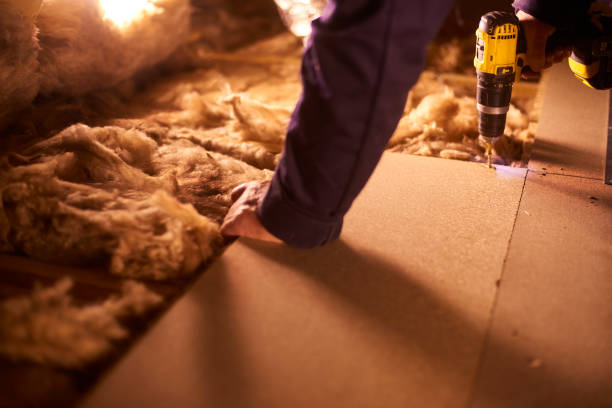 The first step in fitting a loft insulation blanket is to check that the joists are level. The insulation blanket should fit neatly in the space between the joists and not be stretched or torn.
The first step in fitting a loft insulation blanket is to check that the joists are level. The insulation blanket should fit neatly in the space between the joists and not be stretched or torn.
Once it has been fitted, you should lay the loft insulation blanket over the joists and work your way across the loft until it covers all the joists. If the insulation is too thick, you can buy more insulation and lay it across the joists.
Loft insulation can be installed by yourself or you can enlist the help of a tradesman. If you’re a DIY enthusiast, blanket insulation or fibreglass loft insulation rolls are easy to install but other types require a professional to complete the task. But ensure that you wear protective gear including masks and gloves.
Loose-fill insulation is another good option. It uses lightweight materials, such as mineral wool or cork granules. Although it costs more than blanket insulation, it’s the best choice for homes that are draughty and have limited access to a loft.
However, some materials are not environmentally friendly and can cause skin reactions. If you’re not sure about whether blanket insulation is right for your home, it’s best to seek a professional’s advice.
Installing Loose-fill Loft Insulation
To install loose-fill loft insulation, first clear the loft space. Make sure there are no cracks in the ceiling. If there are, the insulation will become damaged. You can also add lead lamps to give the loft adequate lighting.
Be sure to measure the loft area and add enough loose-fill insulation to make it the right thickness. Loose-fill insulation is typically less expensive than traditional forms of insulation.
Blown-in insulation is installed between timber studs in external walls and has higher soundproofing qualities. When compared to loose-fill loft insulation, blown-in insulation can reduce noise levels, increase the overall thermal performance, and improve the comfort of the space.
It is typically applied by an approved installer. The loose-fill material can be applied between floor joists and on top of them.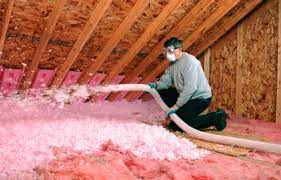
Before installing loose-fill loft insulation, ensure you have sufficient space. Clear the loft space of clutter and secure the area with boards. Then, prepare the space for an installation by placing boards or other materials. Once the space is clear, you can start installing the insulation.
Remember to use gloves and a dust mask to protect yourself from exposure to the material. After installation, be sure to wash your clothing separately from your normal washing. You should follow these instructions closely to ensure that you install the right amount of insulation.
Loose-fill insulation is not fire-proof and can be installed over existing roofing material. Its primary purpose is to reduce heat loss through the roof and is suitable for loft insulation. It can be used as an air seal and an additional layer of loft insulation.
Loose-fill insulation can be made up of various materials, such as volcanic rock and newspaper. Loose-fill loft insulation can help you save energy and money by adding up to 10 per cent to the energy efficiency of your home.
Conclusion:
As mentioned earlier, insulating loft is the best way to prevent heat loss through roofs. You can insulate it at the ceiling or rafter level, depending on how you wish to use your loft space. Installing fibreglass loft insulation is quite easy, and you can definitely go for it if are a certified DIYer.
For trade-quality loft insulation rolls, PIR, multifoil insulation, polystyrene insulation and so much more visit Buy Insulation Online. In addition to structural insulation material, we also supply pipe lagging, duct insulation, and valve covers at a low cost.

Samuel Hitch
Managing Director
Buy Insulation Online.
Leave A Reply
Your feedback is greatly appreciated, please comment on our content below. Your email address will not be published. Required fields are marked *
